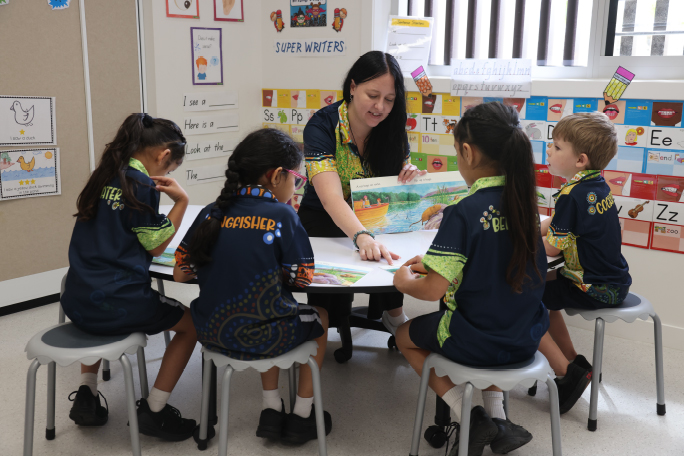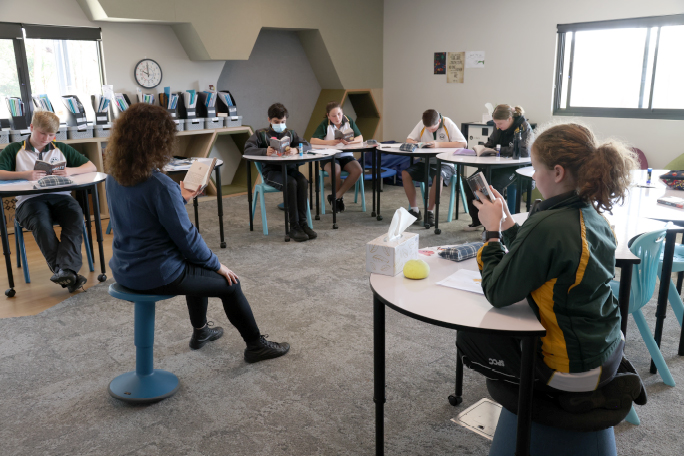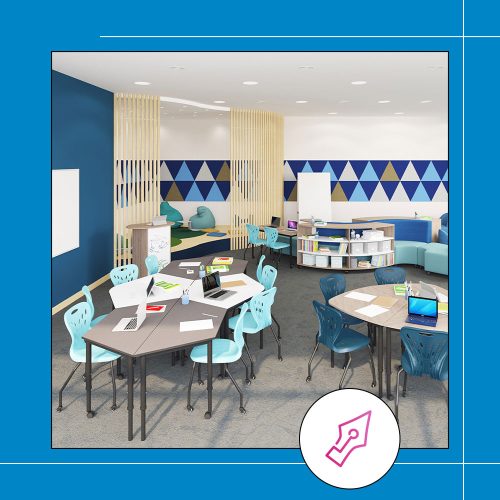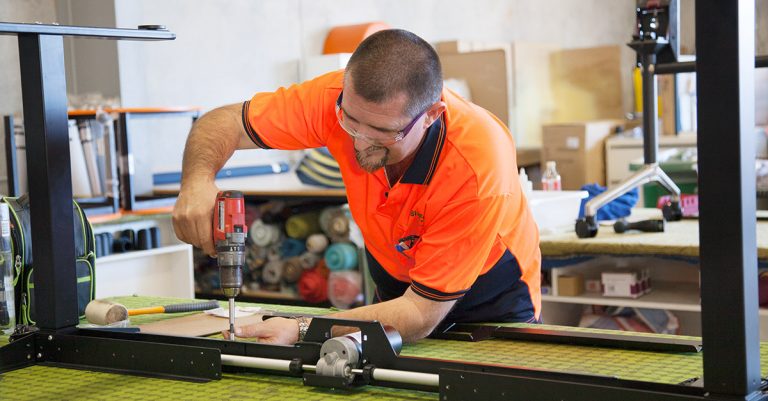A large teacher’s desk and a blackboard have dominated the front of the classrooms for decades. But as research into learning has progressed and pedagogical methods have evolved, this layout —and, indeed, the function and prominence of the teacher’s desk —have also changed. In fact, today’s teaching styles and curriculum are often served better without it.
To help you navigate a change to your teaching furniture requirements, we’ve set out questions to ask yourself about your current workspace, explored the argument for letting go of the traditional static teacher’s desk, and looked at flexible furniture options that give teachers a workspace and ample storage.
Ask Yourself — Do You Really Need a Teacher Desk?
- How often do I sit there?
- Is it taking up too much valuable space?
- Am I using it as a pseudo-filing or storage system?
- Does it create a barrier between me and my students?
- Do I prefer moving around the classroom while teaching?
- Do students feel apprehensive about approaching me at my desk?
Answering ‘not much’ to the first question, and ‘yes’ to any others, is your sign to ditch the desk and adopt a new way of working with a plethora of benefits.

Today’s Teaching Models vs Teachers’ Desks
Having a teacher sitting at the front of the classroom reflects an old-fashioned educational environment where students are all busy with worksheets or a writing task, while the teacher quietly grades papers. This is rarely how today’s classrooms look.
While direct instruction remains important, 2025 teaching models emphasise flexibility, collaboration, and student-centred learning. Modes such as flipped classrooms (online learning at home and application at school), inquiry-based learning, peer teaching, and project- or problem-based learning require a different learning environment. One that allows for collaboration, construction, group work, experiments, and cross-curricular activities (i.e., presenting their learning about history as a play).
Direct or explicit instruction itself isn’t as rigid as the name suggests, either. Technically, it entails providing structured, teacher-directed instruction by clearly explaining, modelling, and demonstrating skills or concepts in small, manageable steps, with ongoing practice and feedback until students achieve mastery. In today’s modern learning environments, that doesn’t mean teaching from behind a desk.
Traditional teacher desks, however:
- take up valuable space (up to 20% in some rooms). Removing the desk frees up space for collaboration zones, technology integration, and movement. Project-based, digital, and active learning work best with movable flexible furniture that can be rearranged to suit the activity required, and ample storage for works in progress.
- reinforce a “front of the room” hierarchy, making teachers less approachable and causing anxiety for students. High school English teacher Nicholas Provenzano found that his old teacher’s desk acted as a barrier to some students. If they needed help, they didn’t always ask for it because they hesitated to interrupt him in his special place.
- limit opportunities for active teaching styles needed for today’s pedagogy. A desk at the front of the room lends itself to the traditional lecture-style of teaching. Teachers may feel bound to deliver instruction from the front while supervising students at their desks.

The Benefits of Eliminating the Teacher Desk
In addition to supporting modern pedagogy, saying farewell to the traditional teacher’s desk has many other benefits.
Reduces clutter and unintentional resource hoarding
Big desks often become the teacher’s dumping ground for items that don’t have their own place. This clutter increases anxiety and reduces our ability to focus as we’re distracted by the mess.
As an experienced teacher, Layne Arakaki states that getting rid of his teacher desk has “been one of the best things I’ve done for my class. Ever.” One reason for his enthusiasm is the reduction in clutter.
He reports that after spending an entire afternoon cleaning out various old papers and 37 packs of Post-its, he discovered he didn’t need anywhere near the quantity of supplies he’d been stockpiling and put them in shared storage for communal use.
Encourages closer teacher-student connections and enhanced engagement
Primary school teacher Jamie Spears found that not being able to sit by herself meant that she mingled more with the students:
“Now that I do not have a desk, I find myself walking around the student desks and work areas more. I am giving more feedback, praise and direction! And when I am sitting, I find that I am sitting WITH my students.”
Research reinforces her experience, showing that active teaching and classroom mobility improve student engagement, classroom management, and inclusivity.
Promotes shared ownership of the learning environment
Both teachers and students can decide how they set up the classroom and can change it more easily from day to day. Nicholas Provenzano removed his desk when he “realised that the entire room was designed around the desk, making it seem as if this was my classroom and the students were just visiting.”
He found that, when the desk was gone, his students seemed to feel a stronger sense of ownership in the classroom. This sense of ownership translated into “greater engagement and respect” between Provenzano and his students.

Alternatives to the Traditional Teacher Desk
Eliminating the teacher desk doesn’t mean you have to forgo a dedicated piece of furniture or storage area – there are as many options as teaching styles, so you’re sure to find one that works for you.
For direct teaching
When the lesson calls for direct instruction or briefing prior to a project, the Mobi Lectern Sit-Stand Desk allows you to use your laptop to present on a screen or blank wall. You can then adjust the height and pull up an ergonomic chair to check emails or move your lectern out of the way to make space for group or movement-based activities.
For collaborative and supportive work
The Huddle Smartable Intensive Support Table (or jellybean table as it’s known in some classrooms) allows you to work intimately with individuals or small groups without the ‘me and them’ feeling.
For storage when you’re an active teacher
Teacher stations and pods still give you your own space to hold your teaching tools, laptop, pens and notepads, but are easy to move when you rearrange the classroom. Options are available with fixed drawers and a pull-out laptop desk or foldable table, or with various stash tray configurations. These mobile stations are particularly well-suited to hybrid teaching (moving between screens, AV equipment, and student groups).
Final Words
Eliminating the traditional teacher desk isn’t just about reclaiming space — it’s about creating a more equitable, accessible, and dynamic learning environment. Removing the desk barrier encourages open communication and stronger connections between teachers and students.
For educators who embrace active teaching, this is great news, too. Moving around the classroom keeps students engaged, supports better behaviour outcomes, and makes learning more inclusive for everyone.
Ready to reimagine your classroom?
Speak with the BFX team today about flexible, functional furniture solutions that support active teaching and modern learning environments without needing a heavy desk.











